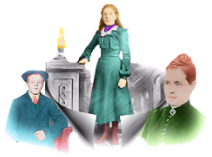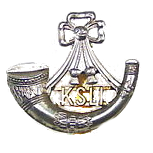


The KSLI Regimental Journal
Korea 13th - 29th May 1951
Background.
It will be remembered that in August, 1950, two Battalions from Hong Kong, 1st Middx. and 1st Argyll, were sent to Korea to form part of an Independent Commonwealth Brigade. These Battalions. had with them a complete Brigade H.Q., LAD, Signals and other bits and pieces. What transpired between August, 1950 and April, 1951, is no concern of ours—suffice to say that when it was decided to send to Korea H.Q. 28 Brigade, 1st K.S.L.I. and 1st K.O.S.B. as replacement units, the Commonwealth Bde. Group consisted of British Bde. Staff and I, AD, half British and half N.Z. Signals, 2 British, 1 Australian and 1 Canadian Bn., and supported in various ways by 16 N.Z. Field Regt., an American 4.2. Mortar Bn., an Indian Field Ambulance, a four piece transport Company consisting of one N.Z. ammunition platoon, and one each British Canadian and Australian G.D. plns., a British Inf. Workshops, and ever-varying numbers and types of American Tank, Recce and Artillery units—the whole at the complete beck and call of any American formation or Army Commander from General Ridgway to R.C.T. Commander who might happen at any given moment to be given its control.
Supplies also came from various sources, the main official ones being American, British and Australian. Unofficially it was proved that such things as jeeps, arms, stores, clothing and other essentials not provided by the War Office, could either be purchased for not more than two bottles of gin or half a bottle of whisky, whilst these same items were readily obtainable free, having been left behind when the former owners had no use for them. These balmy days are rapidly drawing to a close, but a certain officer can be seen every day boiling up his shaving water on a very ingenious little contraption which runs on petrol, and has U.S.Army stamped on it. Maybe it would be unfair to say that this same officer used up his gin ration very quickly this month!
They have told of the conditions under which U.N. troops live and fight. They have given lurid accounts of our common enemies, the North Koreans and Communist Chinese. Most of these, when stripped of their journalistic extravagancies, do in fact give a very true picture of conditions in Korea. Those who spent the last war under modern warfare conditions would find few similarities; possibly a combination of the Italian campaign of 1944 and the Indian N.W.F. of 1930 would give one a fair example. What strikes the newcomer most is :
(a) roads either inches deep in dust and bumps, or mud and more bumps, with steep gradients, shifting edges and over which an incredible amount of American wheeled and tracked vehicles pass continually for 24 hours each day, at great speed and with remarkably few mishaps ;
(b) the Korean life that goes on either in the form of tilling their fields or carrying their goods and chattels from one place to another as the battle ebbs and flows, all in the midst of the complete devastation of every habitation from towns and villages to isolated mud and wattle huts ;
(c) last, but not least, the continuous tin panorama of black and formidable looking mountains, ranging from little undulations of 300 or so feet to monsters up to over 3,000, any of which are often a company objective to be captured in three to four hours and to the top of which supplies have got to be carried before nightfall and the carrying parties returned to base early enough to be capable of doing another trip at dawn the next day.
Mention should also be made of the complete spirit of mutual co-operation which exists between the troops of what must be the most heterogeneous army of all times. Doubt may often exists as to the exact object for which we are all fighting, but when there is a job to be done or help is needed, it is a case of-all hands to the pump, irrespective race or creed.
© KSLI Journal May 1951

| About us |
| Contact us |
| our policy |
| Viewing Notes |
| Acknowledgements |
| Yapp family |
| james Yapps Cockney history |
| William and Eliza |
| Hannah and Mathew |
| James William Yapp |
| Mathew and Alice |
| Aussie connection |
| Family not forgotten |
| Origination 1 |
| Origination 2 |
| Origination 3 |
| KSLI 1951 |
| KSLI journal |
| Journal pt.1 |
| Journal pt.2 |
| Bill Griffiths |
| LCpl Hanlon |
| Bob_West |
| KSLI Roll of Honour |
| News Clips |
| Military Career |
| George Yapp KIA Korea |
| George service pictures |
| Communications |
| Georges Letters 1 |
| Georges letters 2 |
| Last letters home |
| Georges Awards |
| UN Memorial Cemetery Korea |
| Georges Story |
| Exchange rates |
| World Time |
| Speed Tester |